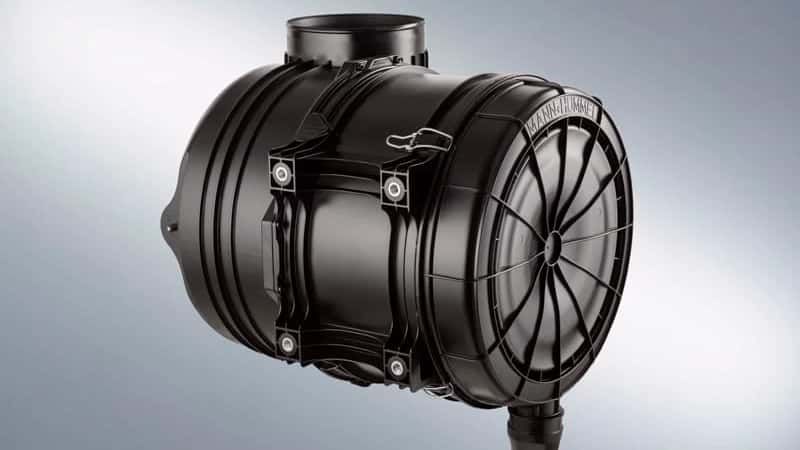New commercial vehicle air cleaners for the Asian market

Commercial vehicle manufacturers always place high demands on the robust product quality of air cleaners for the Asian market. Pressure to lengthen the service intervals under high-dust operating conditions is also increasing. MANN+HUMMEL has developed two new air cleaners for this purpose. Both concepts are freely available on the market and are not subject to exclusive rights.
The Far Eastern commercial vehicle markets continue to offer great development potential, not only due to their size. Many local manufacturers are updating their models as a result of the introduction of new legislation, but also to open up new growth markets. MANN+HUMMEL is introducing a successor product to the successful standard NLG series air cleaner onto the Chinese market. The new air cleaner is characterized above all by a higher dust holding capacity. In India, the Ludwigsburg-based filtration expert is offering a new alternative to the widely-used sheet metal air cleaners in light to moderately heavy commercial vehicles.
Improved standard air cleaner with higher dust holding capacity for China
The first air cleaner is the successor of the current NLG standard series air cleaner which is successfully established on the Chinese market. The product is designed for use in medium to heavy commercial vehicles with nominal flow rates of 28 m3/min.
In addition to a robust product design, one significant objective in developing the new air cleaner was to achieve a significant increase in its dust holding capacity while retaining approximately the same dimensions and low initial pressure drop. This was achieved through a new design for the air inlet. While the previous design had an inlet in the middle and an additional air guiding device for dust pre-separation, the new design has a tangential air inlet and an air guiding fitting already integrated in the housing. The result of this change is a dust holding capacity which is greater by up to 50 percent and also cost savings as the air guiding device is no longer required. A further innovation is that a service indicator available as an option can be connected to the air cleaner.
The air cleaner can be mounted in 90° positions in relation to the air inlet which opens up a large number of mounting and fitting possibilities. In addition, by means of tool change actions, the air inlet can be set to be tangential to the right or left side of the housing and the position of the dust discharge valve can also be selected to match the installation position of the filter on the vehicle.
One additional target of this new development was to adopt the proven technical solution of the previous filter. For example, polypropylene reinforced with fiber glass is used for the housing material and overmolded threaded inserts are used to mount the air cleaner to the vehicle.
MANN+HUMMEL also falls back on proven technology for the filter elements. The main filter element has a traditional radial seal. A safety element available as an option is screwed into the air cleaner housing and sealed with an O-ring. The servicing of the element can be made without special tools.
Alternative to metal air cleaners in India
The second air cleaner is a new development for the Indian market designed for use in light to moderately heavy commercial vehicles with a nominal air flow rate of 16 m3/min. One major objective of this new development was to offer an alternative to the present sheet metal air cleaners which are still very widespread on this market. For MANN+HUMMEL, it was particularly important to increase filtration performance while also reducing weight and costs. Through the use of polypropylene reinforced with fiber glass, the filtration expert has also achieved a weight reduction without compromising the robust concept.
The air cleaner exploits the advantages of a tangential air inlet and an air guiding fitting already integrated in the housing. A cost advantage has thus been achieved here through the simpler design of the air cleaner using fewer parts compared to systems which are still commonly found on the market. Depending on the operating conditions, the dust holding capacity has also been significantly improved. The fitting of an optional service indicator is also possible with this air cleaner.
In this case a large number of fitting and mounting possibilities can be realized by the use of an additional metal holder to mount the air cleaner. In addition, by means of tool change actions, the air inlet can be set to be tangential to the right or left side of the housing. As with the first air cleaner the position of the dust discharge valve can also be selected to match the installation position of the filter on the vehicle.